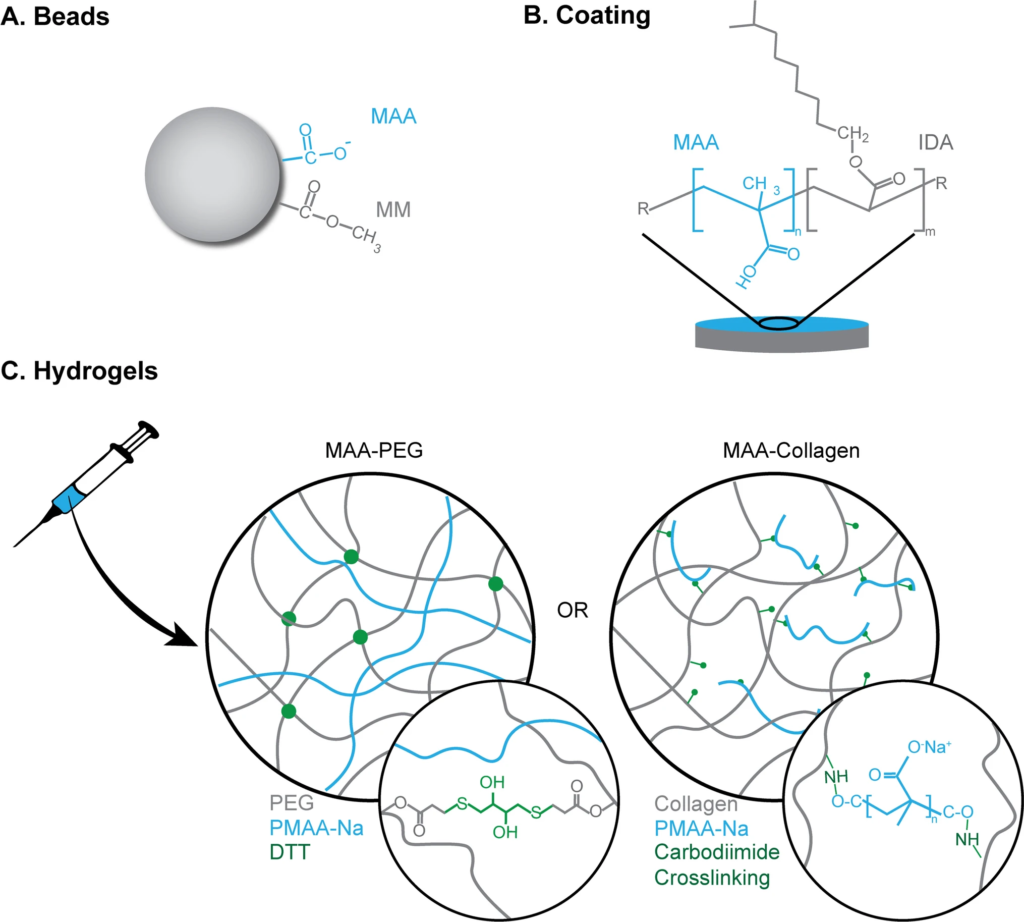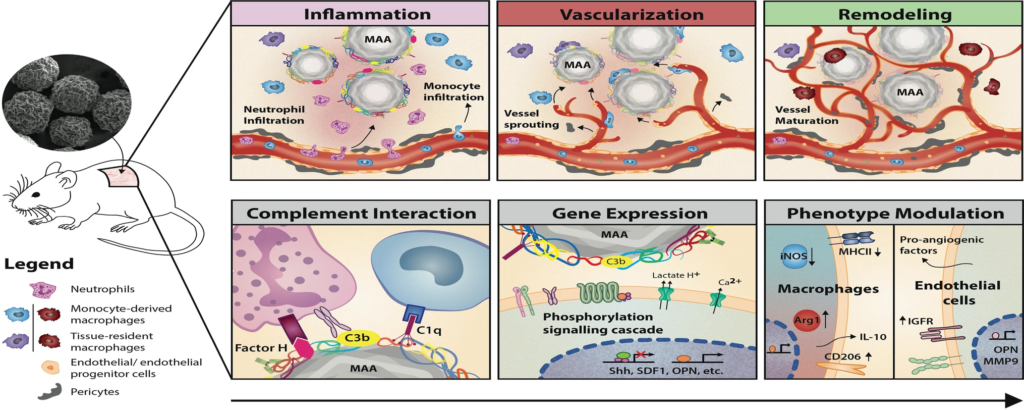The Sefton lab has pioneered the use of methacrylic acid (MAA)-based therapeutic polymers which generates a host response that includes new blood vessels and nerves. A primary factor in this biomaterial-driven regenerative effect is the polarization of responding host macrophages to an alternative phenotype which signals for blood vessel recruitment through the IGF-1 pathway.

Image adopted from Methacrylic Acid-Based Regenerative Biomaterials: Explorations into the MAAgic.
Some MAA-based biomaterials
MAA materials are available as beads, device coatings and synthetic or composite hydrogels for cell delivery and tissue repair.We have well-established that these MAA-based polymers promote the formation of new blood vessels, without the use of exogenous growth factors, with applications in wound healing (in pathogenic diabetic models) and transplant engraftment; early versions of these materials could rescue full thickness rat skin grafts from necrosis. More recently, we have adapted these MAA-based materials into injectable hydrogels which promote regeneration of vessels, nerves, skeletal muscle tissue and which can be used as a cell delivery vehicle, and as therapeutic coatings for medical devices or as a pre-vascularization strategy for islet transplantation.

Effects of MAA biomaterials on the host response. Image adopted from Methacrylic Acid-Based Regenerative Biomaterials: Explorations into the MAAgic with artwork credit to D. Zhang.
Current and future projects
- Understanding the complex pathways associated with biomaterial associated angiogenesis and neurogenesis
- Exploring the utility of MAA based polymers for modulating the adaptive immune response
- Understanding the relationship between subcutaneous vascularization and the adaptive immune response to transplanted pancreatic islets and pancreas precursor cells
- Modeling the rate of vascularization and its impact on the behavior of transplanted cells

